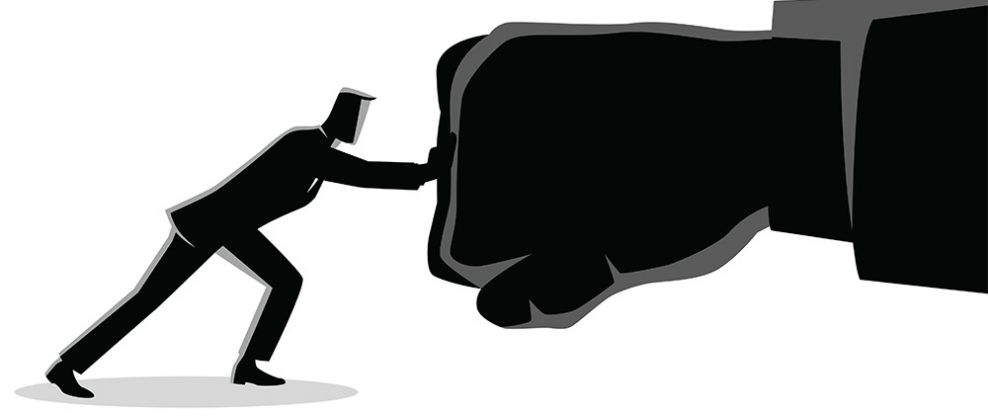(Hypebot) — David Israelite of the National Music Publishers Association (NMPA) and Bart Herbison of the Nashville Songwriters Association International (NSAI) explain the David vs. Goliath courtroom scenario unfolding over new streaming royalty rate proposals.
By David Israelite (NMPA) and Bart Herbison (NSAI), this first appeared in Billboard
Next year, a trial will take place that will determine how much songwriters are paid by digital streaming services for the years 2023-2027. As music fans move from buying records and listening to AM-FM radio to digital music services, songwriters increasingly depend on revenue from these platforms for their livelihood.
“American songwriters… are great danger”
American songwriters, particularly those who write songs as a profession and who are not also artists, are in great danger. The National Music Publishers Association (NMPA) and the Nashville Songwriters Association International (NSAI) are in a David versus Goliath courtroom scenario that began with rate proposals that were submitted from all sides to the court last week.
In the trial, which will take place in 2022, the NMPA and NSAI will face off against the biggest tech companies in the world: Amazon, Apple, Spotify, Google (YouTube), and Pandora. The stakes couldn’t be higher and yet many songwriters don’t know about this battle or how it came to be.
The Copyright Royalty Board (CRB), which is overseen by the Library of Congress, conducts these hearings every five years and multiple songwriters, tech, the music industry, and economic experts testify for either side. Putting on the cases costs millions of dollars. Ultimately, around 80% of the streaming money that goes to songwriters and music publishers from these services, goes to the songwriters, so this truly is a battle on their behalf.
NMPA and NSAI’s case will include five songwriter witnesses: Autumn Rowe, Steve Bogard, Jamie Floyd, Angela Hunte and Jimmy Yeary. These creators represent a range of perspectives and experiences and all are putting forth a great deal of time and effort to advocate for their fellow writers. They will explain how even with massive hits, they still cannot make a living from just writing songs.
Who they are up against is staggering.
The streaming services en masse are arguing for the lowest rates in history, though their proposals are armored with intentionally confusing language to conceal how devastating their requests would be to creators.
First, one must understand that songwriters and publishers are not paid per stream, they are paid a certain percentage of total revenue. Currently, the royalty rate should be around 15% of revenue based on the last decision of the Copyright Royalty Board in 2018, but that decision is still being appealed by the giant tech companies who are dragging out legal processes in an effort to avoid paying. NMPA and NSAI are pushing to raise that number to 20%.
In short, our case demands a greater of formula of 4 parts: 20% of revenue; or 40% of what record labels and artists receive; or $1.50 per subscriber; or $0.0015 per play – creating a per stream royalty for the first time. This will ensure that if revenue dips, there is an insurance policy ensuring songwriters are paid fairly.
“a drastic cut from the 15% rate approved by the court”
In this upcoming CRB, Apple Music is capitalizing on Spotify and Amazon’s appeal which could lead to a 10.5% headline rate — a drastic cut from the 15% rate approved by the court last time around. What is even worse is that the headline rate may mean less because Apple is proposing to drastically cut what it deems “revenue” — meaning it would be 10.5% of a much smaller amount. Apple is also trying to eliminate an entire portion of the rate structure — what is referred to as “TCC” or total content cost. This is the safety net which mandates a certain percentage of the total amount paid to record labels must go to songwriters and publishers. To further cut royalties, Apple is seeking to expand family discount plans and expand its free trial period.
“The carve-outs are so extreme, in some cases it could amount to a calculated zero revenue per subscriber”
The Spotify proposal similarly claims to support a 10.5% of revenue rate, while carving out huge parts of its revenue. The carve-outs are so extreme, in some cases it could amount to a calculated zero revenue per subscriber, resulting in a significantly reduced payment under Spotify’s proposed alternative rate structure. The Spotify plan also effectively eliminates the percentage of record label revenue safety net, expands family discounts and free trial periods and allows for subscriptions to be given away as part of promotional “bundles” further gutting the value of music and total revenue.
Amazon Music is proposing more of the same: claiming a 10.5% rate while eliminating huge chunks of revenue, eliminating the percentage of record label revenue guarantee and expanding any means of giving away subscriptions for free. YouTube, and its parent company Google’s, proposal follows suit, as does Pandora’s which piggybacks Spotify’s proposal.
All of the services will claim they cannot afford to pay more, but common sense crushes this notion.
Spotify is currently sitting on over $3 billion in cash which is more than it has paid out to U.S. songwriters and music publishers in its entire history. The company is currently valued at $47 billion.
Amazon and Apple, which currently have valuations of $1.74 trillion and $2.4 trillion, respectively, often operate their music services as a loss leader – discounting them or giving them away for free as a way to entice new customers to purchase new devices or sign up for other services. The profit generated simply from their music services is largely irrelevant.





























